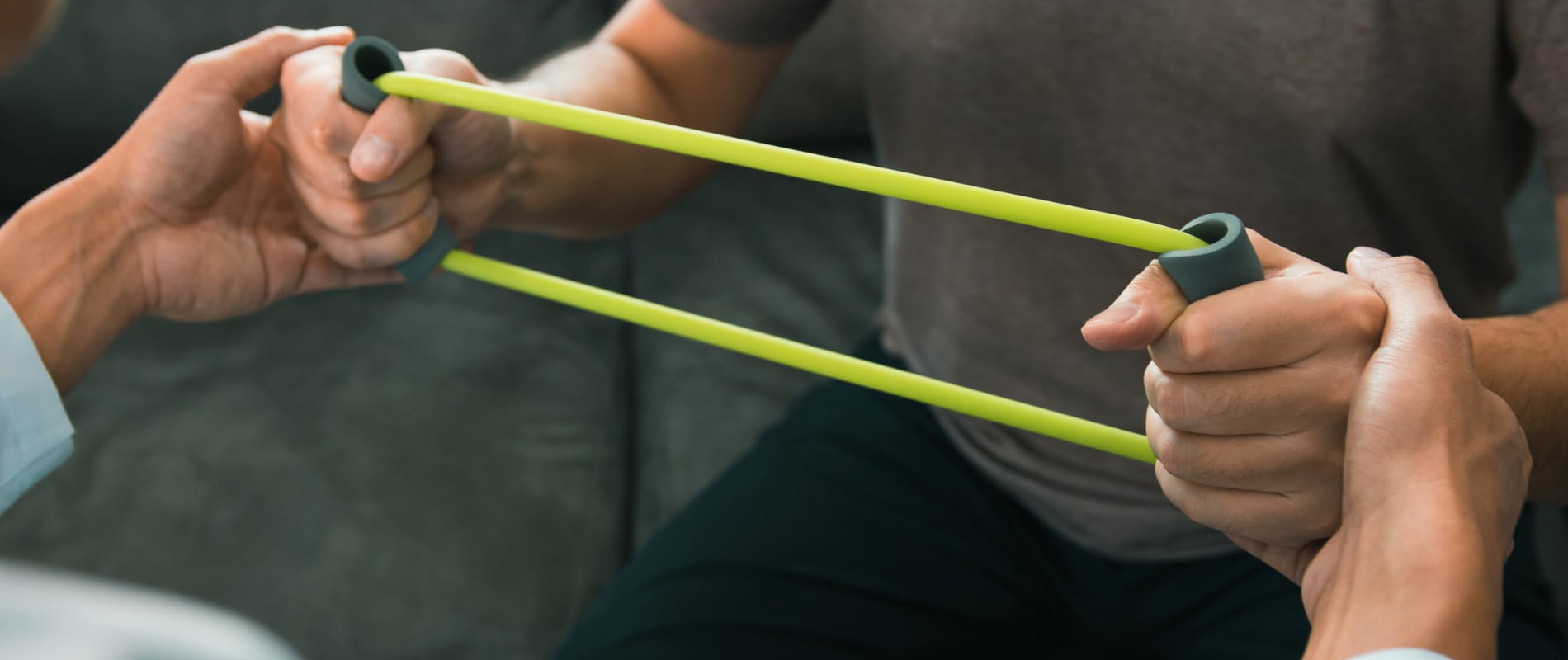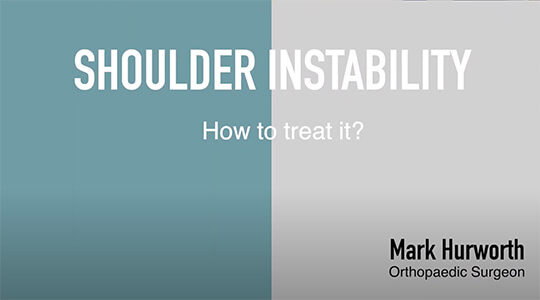Shoulder dislocation Perth
Best treatment options for shoulder dislocation and instability
Shoulder dislocations are common, can happen at any age, and may require you seeking the help of an orthopaedic shoulder specialist.

My orthopaedic practice in a nutshell
Shoulder dislocation injury
How does it happen?
The typical shoulder dislocation happens anteriorly (out the front), and involves a traumatic episode where your arm is forced back and the ball of your shoulder joint gets popped out the front. It is also possible to dislocate out the back or posteriorly. This especially occurs in people who have epileptic seizures.
Some people have joint laxity, which means they can pop the shoulder out in multiple directions and that is where you will hear terms like multidirectional instability or MDI.

Mr Mark Hurworth, Shoulder surgeon Perth
The pathology will typically vary from:
- If you are under 35: labral tearing pattern
- If you are between 35-45: greater tuberosity fracture
- older patients: you may disrupt your entire rotator cuff
So what do you do when you dislocate your shoulder? The first thing is to get it relocated or put back into joint.
If you are in a remote place, this can be difficult, but some of my Perth patients have told me they simply looked it up on YouTube and found a technique to do it themselves. Paramedics typically put your shoulder back in on the scene, or the team at the emergency department.
The important thing to remember is that the longer your shoulder stays dislocated (out), the more problems it may cause, so it’s best relocated sooner.
Shoulder dislocation treatment
Who’s at risk? Do I need surgery?
The shoulder is the commonest large joint to dislocate. That’s because it has a large head and a small socket. Surgeons often refer to the shoulder joint as a “golf ball on a tee”, as it can come out quite easily. Young people, often engaged in contact sports, will typically dislocate more commonly.

Mr Mark Hurworth, Shoulder surgeon Perth
Sometimes we can avoid shoulder surgery and work with nonoperative treatment, but in other situations, surgery will be the best option. In teenagers, and if there is significant damage to the structures around the shoulder, surgery is often the best way forward.
If you dislocate more than once, it may indicate a structural problem in your shoulder:
- A problem with the lining (for example a Bankart ie labral tear)
- Possible bony deficiency or “bony” Bankart, or small fracture on the glenoid (socket)
- And/or Hill-Sachs (a specific type of fracture) on the back of the head/ball
Repairing the torn structures with arthroscopic surgery is a common procedure in my practice. This is the best option if technically possible (as opposed to a shoulder reconstruction which involves shifting tissue from elsewhere to fill defects and typically restrict motion).
This type of surgery is best done before there is too much damage. That is why getting an MRI done as soon as you can after this type of shoulder injury is often worth doing before consultation at my shoulder clinic.
Story continues below video gallery
Videos about shoulder conditions and surgeries
Preparing for shoulder dislocation surgery
How do I prepare for surgery? Any risks?
I repeat this to all my patients from around Perth and Western Australia: motion is crucial – joints are made to move. If you stop moving, you not only end up with joint stiffness but also muscle wasting or weakness, which often makes problems worse not better.
After you injure yourself, it may seem a natural reaction to do nothing and to keep still. But my advice is to keep moving your shoulder within the range of what is possible so that your joint retains some mobility and your muscles do not become too weak. Your muscles are more important than ever after a shoulder dislocation because they provide some stability for your shoulder.
When we talk about risks, there are two types to be aware of:
- Risks associated with the injury itself: Axillary nerve traction/damage can result in numbness of your arm and weakness of the deltoid. Sometimes it can be missed and it is important to diagnose it early. Most people who get this type of nerve damage will recover with the passage of time, but sometimes surgery is required.
- Risks associated with the surgery: All surgeries carry risks, and with shoulder dislocation surgery specifically there is a risk of recurrent dislocation, and very rarely nerve damage. Stiffness and infection are two other risks worth mentioning.
When you come to see me at my practice at Murdoch Hospital, we will discuss the best possible preparation depending on your injury, the type of surgery we plan and your general fitness levels.

Recovery after shoulder dislocation surgery
How long is recovery after shoulder surgery?
Typically the surgery is same day surgery ie you go home the same day as the operation. A physiotherapist will see you either before, or on the day of surgery. You will spend the first six weeks after your surgery using a sling. After that, the recovery exercises will focus on regaining your normal range of motion. And once we have achieved that (around 3 months), it is time to work on regaining strength.
If you are in contact sports, this means a season off. Throwing sports will typically take the longest recovery time after shoulder dislocation treatment, and you will be looking at 12 months minimum.
Avoid shoulder dislocation surgery
How do I avoid it?
Moving and building up muscle around the joint will provide some protection for instability and that is one way to avoid shoulder surgery after a dislocation ie in some situations, we can control and manage your symptoms without surgery. But with a shoulder dislocation, often the best time to fix the problem is directly after your injury. That way, the recovery time after your shoulder surgery is absorbed in the recovery time from your injury. Hence, getting an MRI directly after dislocation is sensible.
Patients often ask me if they will be prone to more shoulder dislocations. The main variables are:
- Age:The younger you are when you dislocate, the more likely to dislocate again. If you are under 20 years old when you have a shoulder dislocation you will have an almost 100% chance of dislocating again. In that case, surgery makes sense.
- Damage caused by the injury: if you knock off a piece of bone with your first or subsequent dislocation, then it typically becomes easier for the shoulder to dislocate. This is why it’s worth getting an MRI as soon after this sort of injury as possible.
The more frequently you dislocate, the easier your shoulder pops out and the easier it becomes to pop it back in. But if you leave it like that for a long time, it may start happening while you are asleep, which then becomes a whole new problem. In addition, the other muscles around the shoulder will develop compensatory behaviour, which can be very difficult to correct if left for a long time.
In summary, if you have had a dislocation, find out exactly what has happened in terms of the injury as soon as possible. Usually this means an MRI scan to see what the damage is.
If you have any questions about shoulder dislocation, please call my practice in Perth at Murdoch Hospital. My team and I look forward to helping you.


